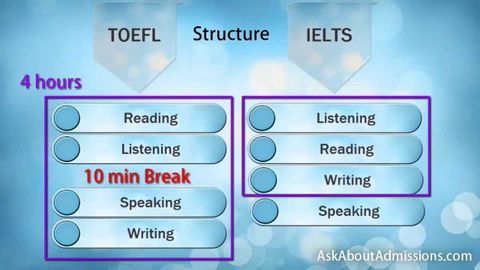
Subtitles & vocabulary
TOEFL - IELTS: All TOEFL - IELTS differences and similarities. Which exam fits you?
00
阿多賓 posted on 2013/05/19Save
Video vocabulary
test
US /test/
・
UK /test/
- Verb (Transitive/Intransitive)
- To be given a medical examination
- To try to establish the truth or nature of
- Noun
- A medical examination
- Action to establish the truth or nature of
A1
More listen
US /ˈlɪsən/
・
UK /ˈlɪsn/
- Intransitive Verb
- To carefully consider what someone is saying
- To pay attention to sound; to hear something with thoughtful attention.
A1
More reading
US /'ri:dɪŋ/
・
UK /ˈri:dɪŋ/
- Noun (Countable/Uncountable)
- Text you are understanding or reading to others
- Meaning or interpretation of something
- Verb (Transitive/Intransitive)
- To take a measurement of a meter (e.g. gas meter)
- To predict your future from cards, a crystal ball
A1
More Use Energy
Unlock All Vocabulary
Unlock pronunciation, explanations, and filters
